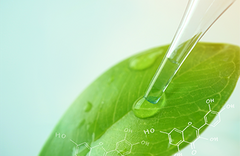Chemical analysis of water
Water - the substance is of a quality that can not be determined on the eyes: colorless, transparent, without the expressed taste and smell, it can be fraught with unseen threat. Thus, an excess of chloride and sulfate in water leads to disruption of the gastrointestinal tract, increased iron content threatening kidney disease and the development of allergic reactions, the aluminum in high doses has a bad effect on the nervous system, fluoro harm the teeth - the same pattern is observed for all minerals macro- and micronutrients that we need and make the water usable in small amounts.
To date, the city water purification systems are not effective enough, even in cases when the water is very dirty. There are many ways to test water quality. For example, tap water having tried, it is possible to feel the presence of chlorine. In contrast to city water tap, to tap water rural smell iron. If such water is settled for several hours, the white precipitate appears at the bottom. This means that the water present in the salt. All these methods of checking water quality have a significant disadvantage - subjectivity and the greatest degree of error probability. The only reliable method of testing the suitability of water for drinking is to carry out a special analysis.
Analysis of water helps to determine the quality, suitability for drinking, washing and normal daily use, as well as the use of this water with equipment operation not only at home but also for drip irrigation, greenhouses and so on. The selection of water samples for chemical analysis should be done according to recommendations of independent selection of the water sample
